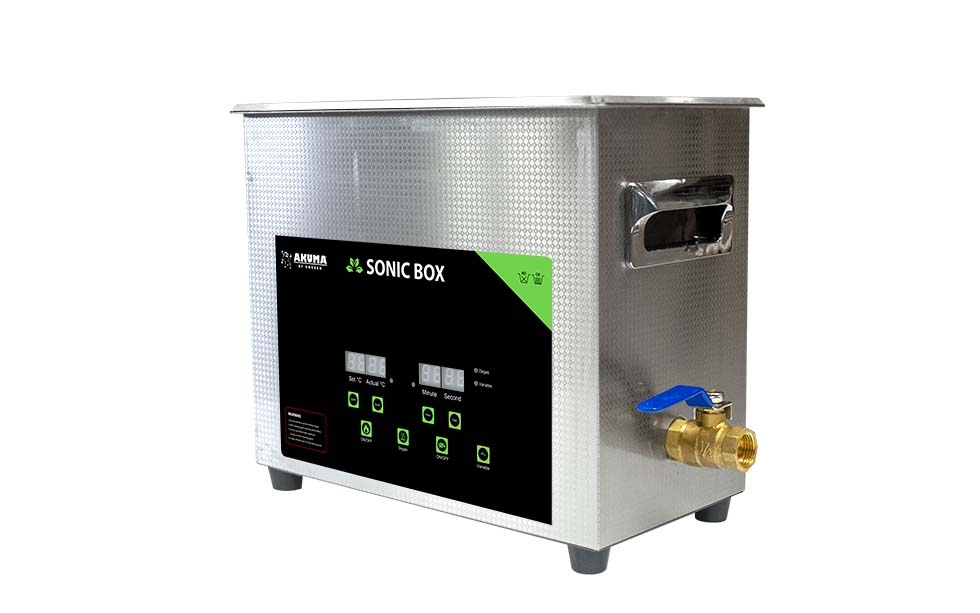Description:
Ultrasonic cleaning is a method in which ultrasound and appropriate solvent, such as water, is used for cleaning.
The technology behind ultrasonic cleaning is a generator that creates an ultrasonic frequency which is in turn transmitted to a transducer. This is mounted in a liquid that creates small cavitation bubbles, about 0.1 millimetres in diameter, which implode, removing dirt from the desired surface. The process normally takes 3-6 minutes, but depending on what is being cleaned it can extend to 20 minutes. The effect can be modified by heating the liquid or using different chemicals.
Areas of use:
Individuals can use ultrasonic cleaning for lenses, jewellery, coins or glasses. In industry, ultrasonic cleaning can be used to process extremely hard materials or to clean hard-to-reach surfaces without causing unwanted damage to the material surface. Applications include the paper manufacturing industry, the metal industry, the automotive industry and many more. Examples of materials that can be cleaned are steel, aluminium, copper, brass or alloys as well as wood, plastics, rubber and fabrics.
Small 6L
| Model | AK40 |
| Freq | 40KHz |
| UL. Power | 150W |
| Heater | 300W |
| Tank | 6L |
| Tank Size | 300*150* 150mm |
| Unit Size | 325*180*280 mm |
| Time | 0-30 min |
| Input | AC220-240V 50Hz |
Medium 22L
| Model | AK41 |
| Freq | 40KHz |
| UL. Power | 400W |
| Heater | 600W |
| Tank | 22L |
| Tank Size | 500*300* 150mm |
| Unit Size | 635*405*340 mm |
| Time | 0-30 min |
| Input | AC220-240V 50Hz |
Large 30L
| Model | AK42 |
| Freq | 40KHz |
| UL. Power | 500W |
| Heater | 600W |
| Tank | 30L |
| Tank Size | 500*300* 200mm |
| Unit Size | 635*405*390 mm |
| Time | 0-30 min |
| Input | AC220-240V 50Hz |





